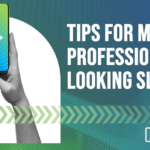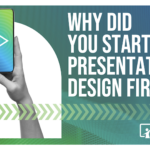Why PowerPoint Presentation Design is Key to Your Career Success

Billionaire entrepreneur Richard Branson calls excellent communication an ‘art’, and says that it’s the most important skill any leader can possess.
Branson isn’t the only one who thinks so. In the business world, it’s common knowledge that if you don’t communicate well, you won’t get ahead. Effective presentation skills, including great PowerPoint presentation design, is an essential part of communicating well.
Analysis of more than 100,000 presentations by a team of data scientists proves this theory as it shows that it’s not only what an audience hears that’s important; what they see is equally so.
“We learn by example and by direct experience because there are real limits to the adequacy of verbal instruction,” according to Malcolm Gladwell, author of Blink, The Power of Thinking Without Thinking.
In Blink, Gladwell illustrates how our unconscious is judging all the time. You know this instinctively which is why you’d never show up to a job interview in your pajamas. You break out your best suit because what you see is what you get. Your best suit gives your audience the instant visual message: “I’ve got this.”
The same goes for your PowerPoint presentation design. As Gladwell suggests, if you’ve only got a split second before someone is making a lasting judgment of you, bad templates and endless bullet points aren’t going to win you that big promotion or new client.
Your PowerPoint presentation design visuals are integral to the success of your presentation. They should support what you’re saying, not be what you are saying. Think of it this way: you want them to work as a guide rather than as a crutch. To achieve this, they need to be a compelling visual display of your ideas.
Your presentation is your chance to guide people to action. You are saying, “I’m the perfect fit for the new position you’re creating.” Your audience is looking to you for this guidance. If you come across as unsure, they will be too. It’s why you need to give them the sense that you are someone who should be followed; that what you are communicating is right and true.
Whether or not a presenter is confident reflects an audience’s opinion of their “accuracy, competence and knowledge level,” according to research by Caroline Wesson at the University of Wolverhampton, Institute of Psychology, in the UK. “The more confidently expressed that information is, the more likely it is to be followed.”
Exuding confidence is key to giving your audience the feeling that you know what you are talking about and that you are the expert. And nothing gives a presenter more confidence than standing in front of a visual representation of their ideas that makes the audience nod their heads in agreement as they listen.
If you aren’t feeling confident in your presenting ability, don’t worry. According to TED curator Chris Anderson, you have the power to change the situation: “No matter how little confidence you might have today in your ability to speak in public, there are things you can do to turn that around. Facility with public speaking is not a gift granted at birth to a lucky few. It’s a broad-ranging set of skills. There are hundreds of ways to give a talk, and everyone can find an approach that’s right for them and learn the skills necessary to do it well.”
Again, standing in front of killer slides is a great way to give yourself that confidence boost. So even if you are shaking on the inside, when your PowerPoint presentation design is great, you’ll feel more at ease and this will help you come across as more confident. Your audience will notice this and respond accordingly, that is, they’ll believe you and what you are saying. Get ready; this is when they hand you that promotion.
Business leaders all over the world agree, you’ve got to be able to communicate well if you want to get ahead. Great presenting skills – including great visual content in your PowerPoint presentation design – are part of your total communication package. Make sure that yours are up to the job.








